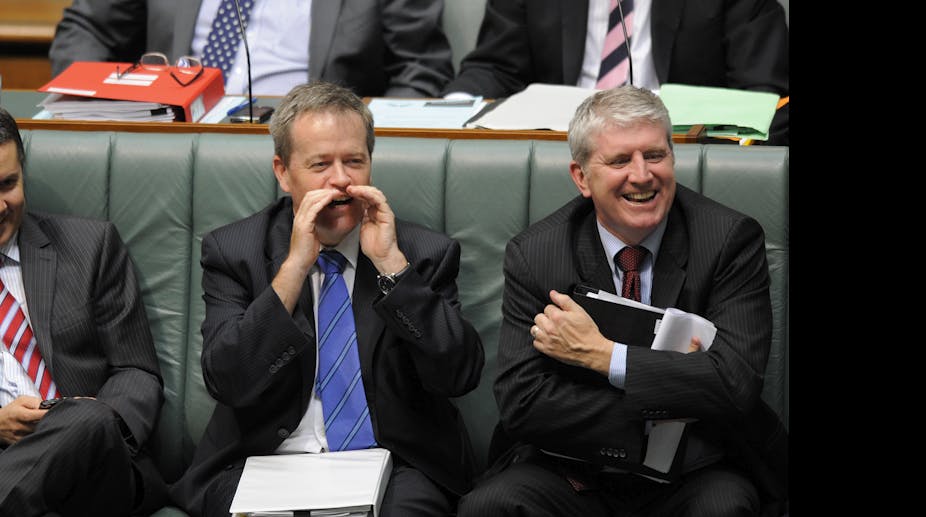Labor’s devastating Queensland election result has prompted much soul searching within the party and questions about its fundamental approach.
Do voters even know what the Labor party stands for? Or is the failure with poor communication of Labor values and successes?
Financial Services and Superannuation Minister, Bill Shorten, recently announced an increase in the superannuation contribution. But the party is not selling superannuation as a key Labor policy, even though it should.
Compulsory super is one of Labor’s greatest achievements.
Financial Services and Superannuation Minister, Bill Shorten, is [right to claim the increase in the contribution rate from 9 to 12% will deliver significant social and economic benefits for individuals and the nation.
The Keating Government introduced compulsory superannuation in the form of the Superannuation Guarantee (SG) in 1992 with two objectives in mind. Then Treasurer John Dawkins said it would increase private provision for retirement and increase national savings. It has succeeded on both counts.
Just over a century ago, Australia was one of the first countries to introduce old age pensions. The scheme was designed to alleviate poverty for a relatively small number of people who lived much past 65, not to provide an adequate income for most of the population for a long period of time.
Life expectancy in Australia has jumped by more than twenty years for men, and by nearly thirty years for women, during the last century. Many people can now expect to live a quarter of their life span in retirement.
What’s more, the numbers entering retirement will increase dramatically during the next few decades as the baby boomer demographic, over 5 million people, steadily enters retirement.
No national government can provide a decent living for that many people for that long entirely from taxation revenues. It would place too high a burden on the working age population and would prove unsustainable.
Compulsory superannuation has given Australia a much more sustainable approach to funding retirement. According to the OECD, Australia has one of the highest private expenditures on old age pensions, in excess of 3.5% of GDP, and one of the lowest public expenditures, less than 3.5% of GDP. Private spending is negligible in a third of OECD countries. The OECD average for public expenditure is 6.5% of GDP, with some countries (Austria, France, Germany, Greece, Italy and Poland) already spending in excess of 10% of GDP.
The sums are enormous. At the end of 2010, total superannuation assets, arising from both compulsory and voluntary super contributions, were around $1.3 trillion, or about 100% of annual GDP). With the proposed increase in the SG to 12%, total superannuation assets have been projected to grow to over 160% of GDP by mid century.
Compulsory superannuation has also contributed to savings rates in Australia that are high by international standards. In a paper last year, two Commonwealth Treasury economists argued that the current boost to private (national) saving is about 1.5% of GDP, and they expected this level to rise significantly over the next decade, as the contribution rate rises gradually to 12%, and to reach 3% of GDP in the next few decades.
A higher savings ratio means we have a reduced need to draw upon the savings of foreigners. It means that our foreign debt is lower than it would otherwise be. That increases Australia’s capacity to withstand shocks to the global financial system. Shock jocks, business organisations and Opposition spokespersons who regularly bleat about foreign debt levels should be praising the federal Government’s decision to raise the SG rate.
Just as importantly, the expansion of the superannuation system saw employee coverage rise sharply, from around 40% of total public and private sector employees in the mid 1980s, to more than 90% a decade later. What’s more under the pre-existing arrangements many of those covered by superannuation were public sector employees in unfunded and generous, defined benefit schemes. Completely unsustainable.
Despite the rantings of some of its more ideologically driven members, an Abbott Government would retain the Gillard Government’s increase in the SG rate, just as the Howard Government kept the SG itself. Wonder why? Well, Australian Institute of Superannuation Trustees research released this week found 75% of all Australians supported an increase to 12% in the SG rate.
Compulsory superannuation, like universal health care, is here to stay and so it should.

